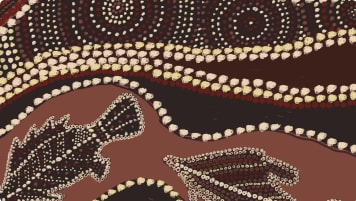Arnhem Land, Northern Territory
To enter Arnhem land a permit is required for visitors. Explore and learn about the Aboriginal community in Arnhem land as part of a small group package tour that includes Darwin and the Kakadu. These are small group tours of upto 12 like minded mature and senior travellers, couples or solo travellers interested in exploring as they tour.
25 Jun 20 · 8 mins read

Arnhem Land, Northern Territory
This is a vast region in the north-east of Australia‘s Northern Territory and of importance to the Aboriginal community. Arnhem Land is home to some of Australia‘s most beautiful scenery. With the land owned by Aboriginal people, the indigenous people of Australia. Arnhem land is accessible only by permit for the non indigenous Australian or overseas visitor, Arnhem Land is a vibrant stronghold of traditional Aboriginal culture .
Enclosed by Kakadu National Park (with the border marked by the East Alligator River )close to Jabiru, the Arafura Sea and the Gulf of Carpentaria and their often rugged coastlines, the Arnhem Land region covers over 97,000 square kilometres – roughly the size of Iceland, and bigger than Hungary, Portugal, or Austria. This vast territory of the Arnhem land region contains a variety of landforms, from sandstone escarpments (continuing the Arnhem Land Plateau from Kakadu National Park ), to pristine beaches, to remote islands.
Much like the rest of Australia where the indigenous people have proven to have been living for upto 120,000 years, Arnhem Land has been home to Aboriginal people for over 60,000 years. The aborigianl community of this part of Australia‘s Northern territory have an enviable record archaeological record and aboriginal rock art record across east Arnhem land and west Arnhem land . In 2010 , a piece of the world’s oldest stone axe – dated at around 35, 000 years old – was found in southern Arnhem Land.
The traditional owners of the land here are the Yolngu people, who constitute 12,000 out of Arnhem Land‘s total population of 16,000. The Yolngu – which simply means ‘people’ – belong to a number of clans that commonly intermarry, and are closely related culturally and linguistically. The Yolngu speak over twelve different languages – with English a third (or thirteenth!) language for many Yolngu.
Like the culture of the Bininj/Mungguy , Yolngu culture is determined by a complex form of kinship . People and things – every stone, fish, river etc – are divided into two moieties, Dhuwa and Yirritja, which are in turn divided into several different groups. A Yolngu person must marry an aboriginal person from the other group, and children take their father’s moiety.
Like Aboriginal people around Australia , the Yolngu used fire to control their landscape. They lit pandanus palms on the coast at night as a beacon for canoes at sea.
The food staples for people in Arnhem Land were seeds, yams, animals, and fish. They ate at least thirty-five different fruits and thirty-five vegetables. Food seems to have been abundant, and the women – whose traditional duty was to gather plant-foods – had relatively leisured days. A study conducted in October 1948, of a community which had only limited contact with settlers, found that women generally worked only five hours a day in gathering and cooking foods (Blainey, The Story of Australia’s People).

Fishing was also crucial to the Yolngu way of life. They believed that land and sea were linked, and that they had the responsibility to look after both. Inland, on the Glyde River, they developed a sophisticated system of fishing nets and traps. On a cane platform set into the river, they created large tubs made of paperbark, and sewed with cane. Chutes made out of paperbark brought water through the fence and into the tubs – where men stood waist deep in water, ready to collect the fish, which were now stranded on the bamboo platform. The Arafura Swamp – the largest paperbark swamp in Australia – was a rich source of food for the Ganalbingu people of the area.
The Yolngu had extensive trade links into Central Australia, from which they received boomerangs. Boomerangs were not used for hunting in Arnhem Land, but as rhythmic instruments during ceremonies.
For at least two centuries prior to European settlement, the Yolngu people engaged in extensive trade with Macassan fishermen, from the island of Sulawesi in Indonesia. As many as sixty vessels came annually to Australia, fishing shallow waters for the sea slug known as trepang, which were then traded to China, where they were a popular foodstuff, used in soups and consumed as an aphrodisiac.
The Indonesians primarily worked peacefully alongside Aboriginal peoples, but occasionally battles did break out. There was an extensive amount of cultural exchange: Macassar words entered Aboriginal languages, and motifs from Macassans were incorporated into the bark-paintings of Arnhem Land. The Macassans exchanged tobacco, pipes, beads, belts, cloth, iron knives and axeheads, and strong dugout canoes, known as lippa-lippa, for the right to fish on Australian waters and employ local labour. Many of these prize objects were traded with Aboriginal groups closer to the centre of Australia. A few people even sailed to the city of Macassar, where they lived for months until the monsoon brought fishermen back to Australia.
The Wurrwurrwuy (Garanhan) Macassan Beach interpretative walk in Northern Arnhem Land tells the story of this cultural exchange.
In 1623, the north-east coast was visited by the Dutch explorer Willem van Colster in his ship, Arnhem (Aernem), from which the name ‘Arnhem Land’ comes.
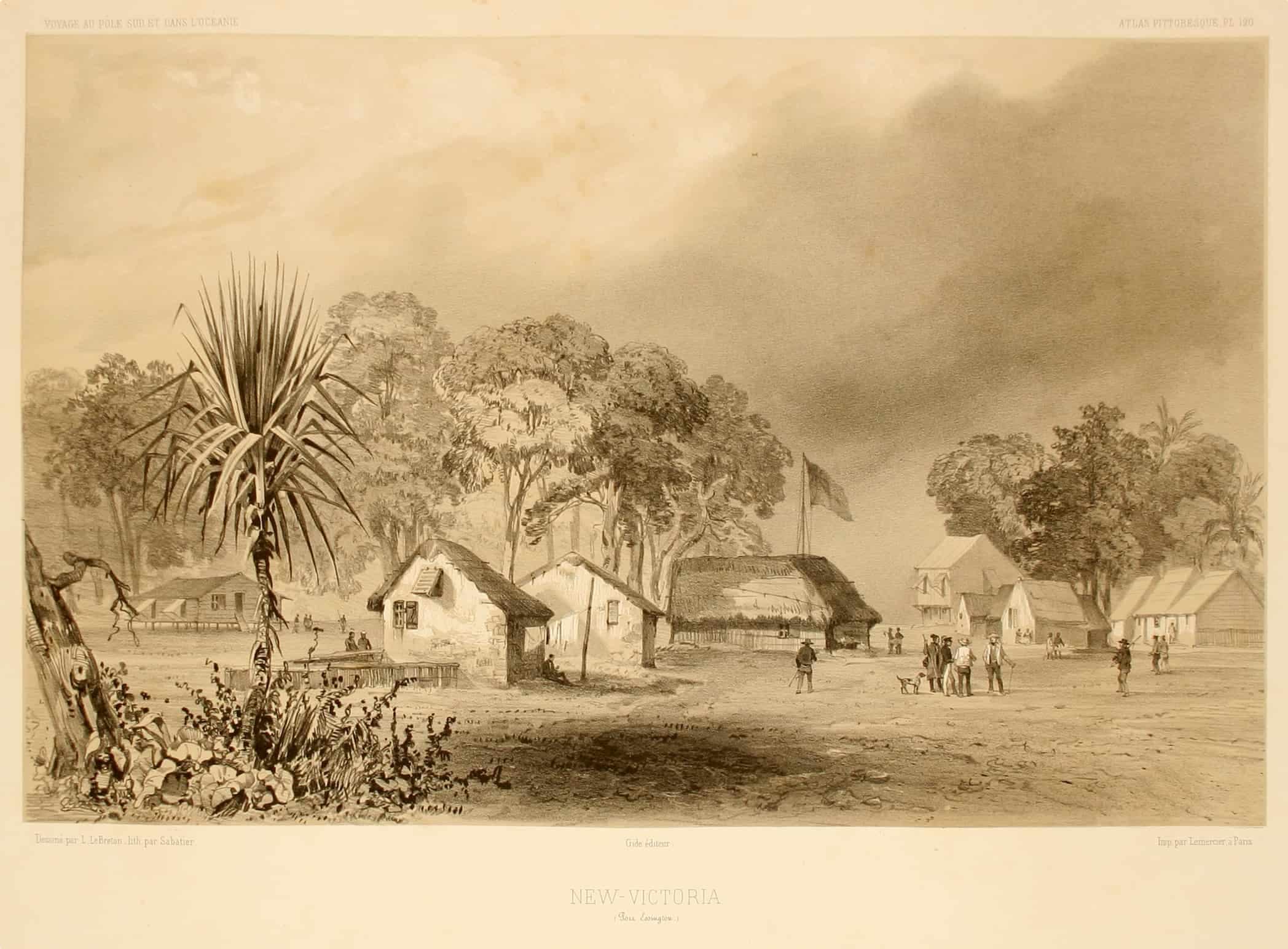
In the early 19th century, the British became interested in establishing a settlement along the northern coast of Australia, to stimulate trade with Asia. In 1838, they established the Victoria settlement at Port Essington. The town was plagued with problems, as the British struggled to adapt to the tropical environment. Many died of malaria and fever. The settlement was abandoned after 11 years in 1849, and the eerie ruins can still be toured today.
After the failure of the Victoria settlement, Arnhem Land was only lightly touched by colonisation. For the British, it represented a series of failures: military settlements, pastoral stations, and mining operations were progressively thwarted by the challenging tropical conditions, rugged landscapes, and the strong opposition of the Yolngu people.
As a result, the Yolngu people were never completely colonised. They have occupied their country consistently since the Dreamtime. In 1931, the Australian government declared Arnhem Land an Aboriginal Reserve, a major milestone in securing land tenure for the Yolngu. At the same time, they had to contend with assimilation policies, that sought to destroy traditional Aboriginal cultures.
In 1963, the Yolngu people of Yirrkala presented a richly decorated bark petition against the proposed mining of bauxite on their land. It was the first petition of its kind, and drew attention to the Aboriginal land rights movement.
In 1976, the Northern Territory Aboriginal Land Rights Act returned Arnhem Land to its traditional owners. Today, while many Yolngu people live in towns owned and managed by Community Councils, others have returned to more remote lands, to revive traditional cultural practices and reconnect with Country.
Arnhem Land remains under the control of Aboriginal people today. Independent tourists must receive a permit to visit, with the exception of a fly-in/fly-out day trip. If you choose to join our tour of Kakadu and Darwin, Odyssey Traveller will arrange a permit for us to visit Arnhem Land (pending public health restrictions).
Things to see in Arnhem Land:
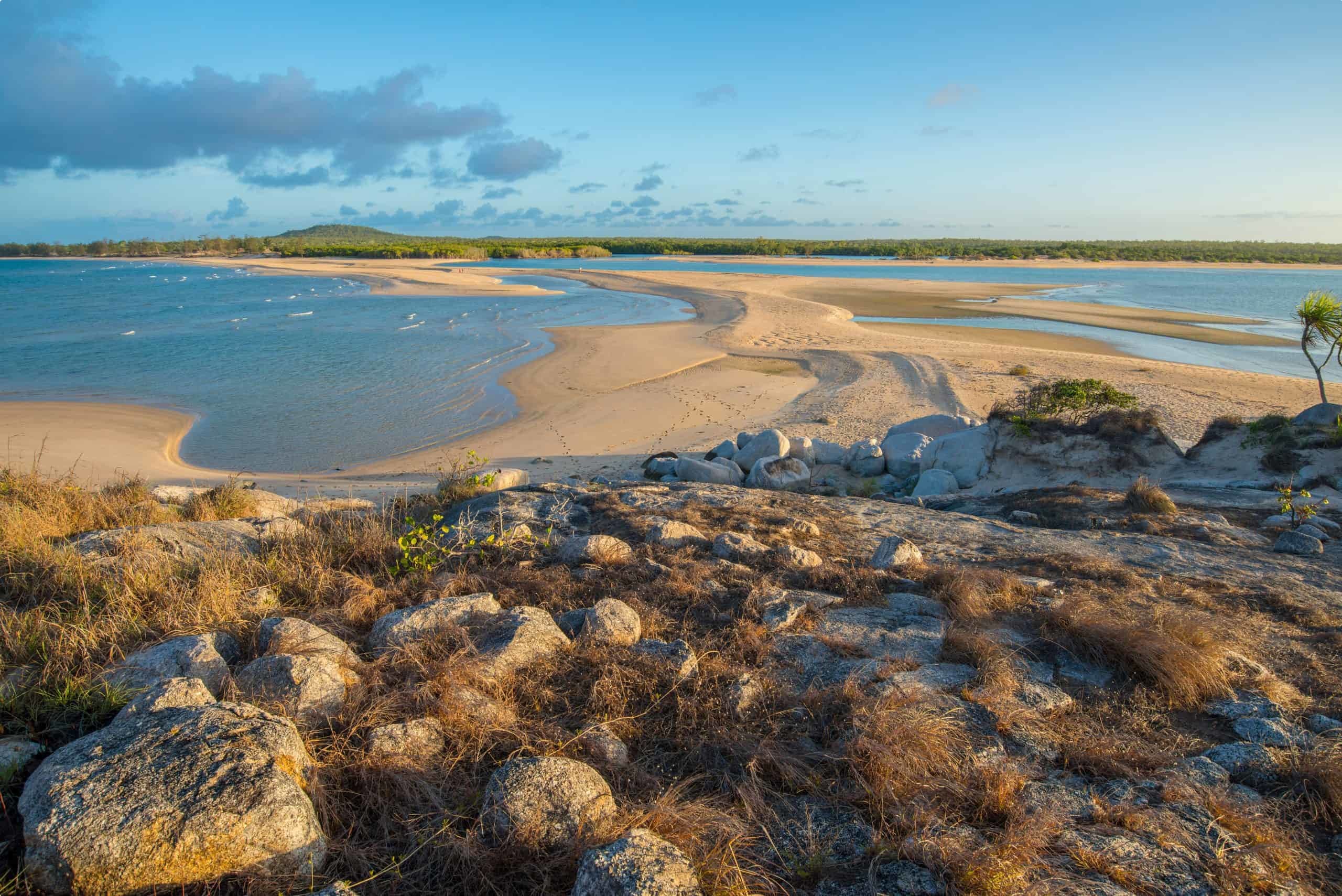
Thanks to its small population, Arnhem Land remains a virtually untouched natural wilderness, a place of stunning beauty. The western area is an extension of Kakadu ‘stone country’, the ancient sandstone escarpment of the Arnhem Land plateau.
The Cobourg Peninsula is home to some of Australia’s most remote and beautiful beaches. The peninsula is covered by the Garig Gunak Barlu National Park. You’ll likely see dolphins and turtles, and the waters are considered to offer some of the best fishing in Australia. Unfortunately, while the surrounding waters are tempting, it’s best not to swim – the saltwater crocodile is common around here!
The Cobourg Peninsula is a RAMSAR-listed wetland of international importance as the habitat of a variety of migratory birds. The wetlands are also home to dugongs and several endangered species of turtle.
East Arnhem Land is home to Arnhem Land’s biggest settlement, Nhulunbuy, built to service the bauxite mine built here in the 1960s. Today, it has a population of around 4,000 people, making it the sixth biggest settlement in the Northern Territory.
Nhulunbuy sits on the Gove Peninsula, home to beautiful beaches, reefs, estuaries and off-shore islands, including Bawaka, which is considered by some to be Australia’s most beautiful beach.
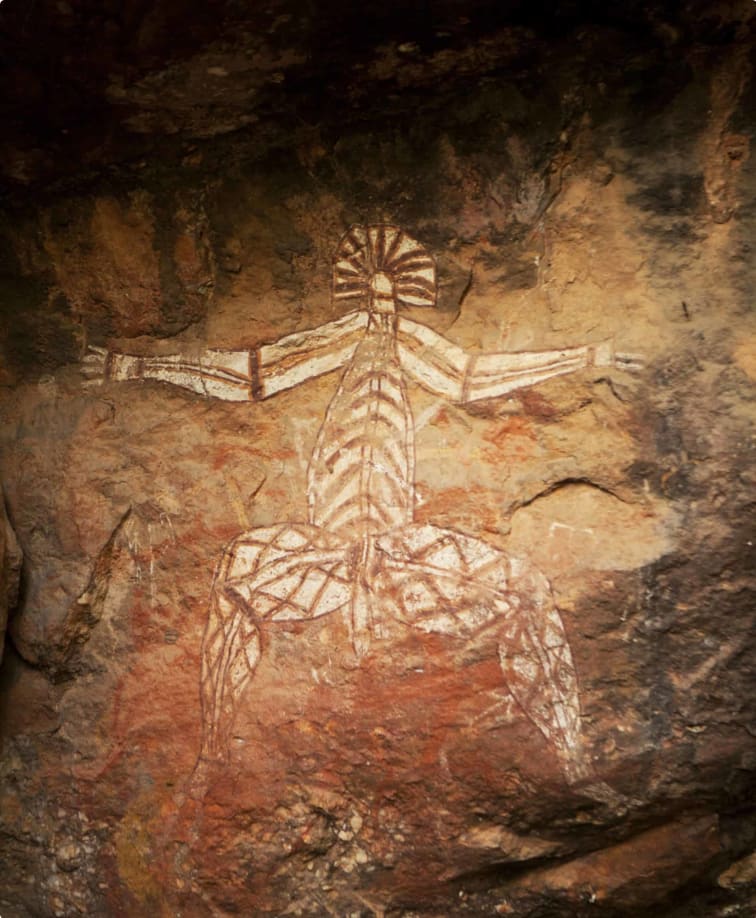
A visit to Arnhem Land would not be complete without experiencing the area’s vibrant Aboriginal art tradition. Rock artsites are scattered around Arnhem Land. Like next-door Kakadu , Arnhem Land is noted for its x-ray art tradition , which depicts animals and human figures with the bones and internal organs clearly visible. X-ray paintings are commonly found as aboriginal rock art in the shallow caves of ‘stone country’, in Kakadu and Arnhem Land.
Injalak Hill , in Western Arnhem Land, is home to aboriginal rock art from the pre-estaurine, estaurine, and freshwater periods, with the site likely having continuous occupation for over 30,000 years. The site can be viewed on a tour with a local Aboriginal guide.
Within Arnhem land close to Injalak hill is Injalak Art a not-for-profit community-owned aboriginal art centre that serves as a social hub for the surrounding Aboriginal community, collating the work of over 200 artists. The majority of artists here are from the Kunwinjku language group, part of the Bininj people.
Arnhem Land and the Top End are also known for the tradition of bark painting, in which designs are painted onto the interior of a strip of tree bark. Traditionally, tree bark painting were transient objects produced for ceremonial purposes, but are now sought after by collectors and public arts institutions. Traditionally, a tree bark painter painted designs owned by his or her ‘skin’ or clan, which cannot be painted by other artists.
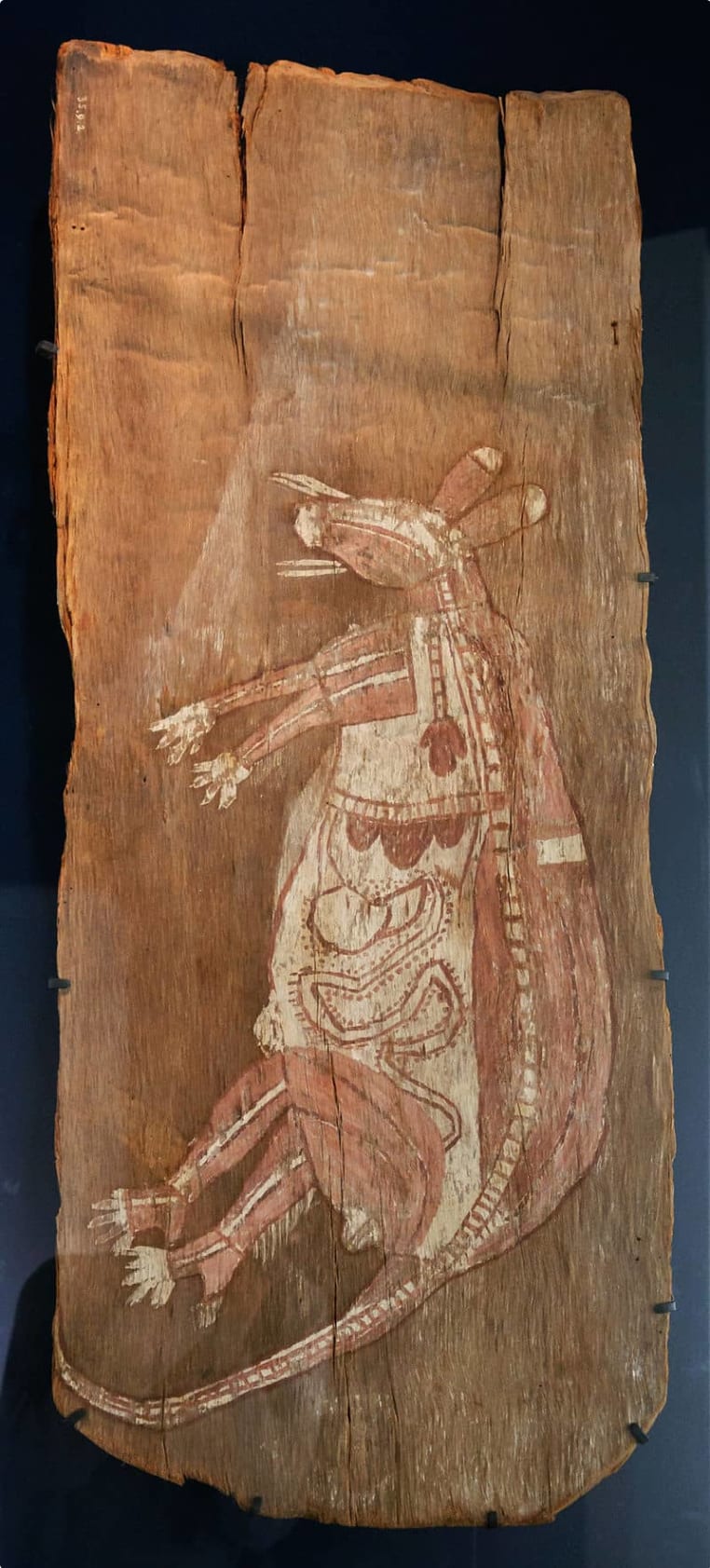
The Buku-Larrnggay Mulka Arts Centre, Yirrkala, around twenty minutes from Nhulunbuy, specialises in the works of the Yolngu people. Yirrkala art was among the first Indigenous arts to capture the interest of the Australian art world in the 1950s, and Yirrkala artists were the first to recognise the power of using Aboriginal art for political purposes, including the Yirrkala Bark Petition (on display in Canberra), and the Yirrkala Church Panels (on display in the art galleries), which were designed for a local Methodist church and representing a radical attempt to fuse Yolngu and Christian religious beliefs. The gallery sells bark painting, prints, jewellery, fibre work and sculptures.
Odyssey Traveller will visit Arnhem Land as part of our tour of Kakadu and Darwin, one of our many brand new outback and Australia tours. Beginning and ending in Darwin, our tour is designed for mature and senior travellers who are eager to learn as they travel. We go beyond the highlights of your typical Kakadu day tour, spending six nights in lodge accommodation in Jabiru, so that you can make the most of your trip to Australia‘s largest national park.
Kakadu National Park is a place of incredible ecological diversity, ranging from the rugged escarpments of ‘stone country’, to monsoon forest, to the RAMSAR-listed wetlands and tidal flats. Our Kakadu tours take in the park‘s most spectacular scenery, from the stunning waterfalls of the Gunlom Plunge Pool and Waterfall Creek, to seeing native wildlife on a Yellow Water Cruise of the Yellow Water Billabong – including magpie geese and saltwater crocodiles in their natural habitat! We also take the time to learn about the indigenous culture of the park, seeing ancient Aboriginal rock art and archaeological sites at Ubirr Rock and Nourlangie Rock.
Our tour of the Northern Australia goes beyond Kakadu. On our way along the Arnhem Highway, we make a detour to the Fogg River Conservation Reserve in the Mary River Wetlands, while we make a side trip to Litchfield National Park on our way up the Stuart Highway. Our Litchfield tour takes in the pristine water of Buley Rockhole, one of the Northern Territory‘s most popular swimming holes, and visits the striking termite mounds that dot the park.
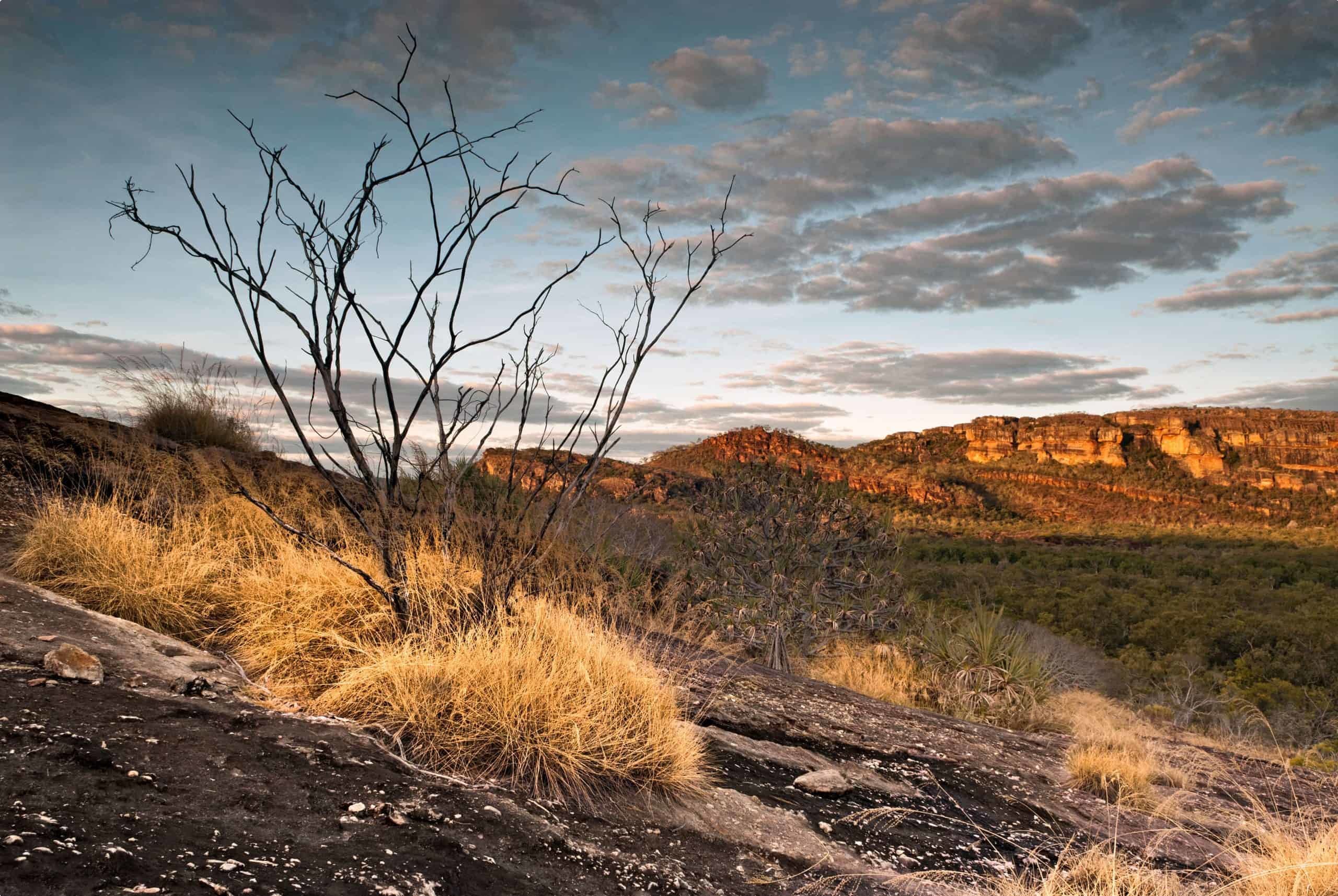
Articles about Australia published by Odyssey Traveller:
- The Kimberley: A Definitive Guide
- Uncovering the Ancient History of Aboriginal Australia
- Aboriginal Land Use in the Mallee
- Understanding Aboriginal Aquaculture
- Mallee and Mulga: Two Iconic and Typically Inland Australian Plant Communities (By Dr. Sandy Scott).
- The Australian Outback: A Definitive Guide
- South and East Alligator Rivers, Northern Territory
For all the articles Odyssey Traveller has published for mature aged and senior travellers, click through on this link.
External articles to assist you on your visit to Australia:
Related Tours

days
Jun, Jul, Sep, Feb, Mar +1Darwin and Kakadu small group tour
Visiting Northern Territory
Explore and learn as part of a small group tour for seniors on this package tour to Darwin and Kakadu National park, a UNESCO world heritage site. This program also visits Arnhem land. Our focus is on ecology, landscapes and history on this 14 day program in the far north of the Northern Territory.

13 days
May, Jun, Jul, Aug, SepSmall group tour of Australia's Kimberley
Visiting Western Australia
Escorted small group tour of the Kimberley. We explore and visit The Bungles, Bell Gorge, Mitchell plateau & Halls Creek in the dry season. Amazing landscapes intertwined with Aboriginal communities resident more than 45,000 years.
From A$15,390 AUD
View Tour
days
Mar, May, Aug, Sep, Oct +2Small group tour of World Heritage sites and more in the Southern States of Australia
Visiting New South Wales, South Australia
Discover the World Heritage Sites of the southern states of Australia travelling in a small group tour. A journey of learning around the southern edges of the Murray Darling basin and up to the upper southern part of this complex river basin north of Mildura. We start and end in Adelaide, stopping in Broken Hill, Mungo National Park and other significant locations.
